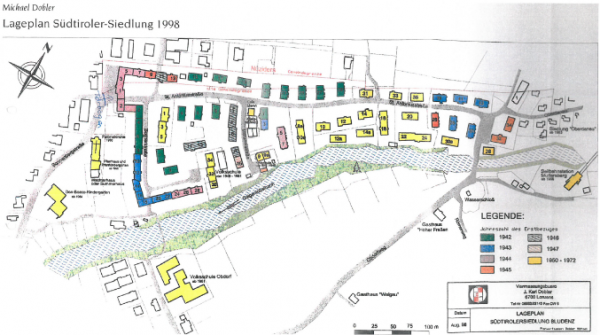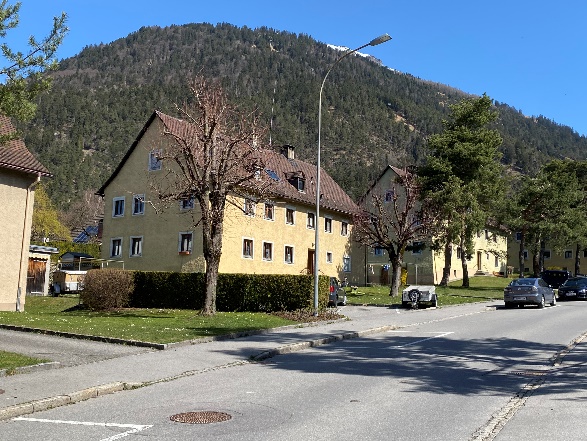SüdSan - Socially acceptable, climate-compatible refurbishment of two multi-family-houses as a model for the refurbishment of the Südtiroler-Siedlung Bludenz
Short Description
Initial situation/motivation
In order to implement the Paris Agreement on Climate Change, the EU reduction target of 55% and the goal of climate neutrality in 2040, Austria will have to be more ambitious in its 2030 reduction targets for the building sector. This means that the quality and rate of renovation must be significantly increased.
While individual pilot projects demonstrate that renovations compatible with climate targets can be realised with marketable technologies and concepts, the majority of refurbishments are realised in a far lower thermal quality, with low thermal quality, low efficiencies, high proportions of fossil heating systems and solar systems that are too small. At the level of the entire stock, the refurbishment rate has stabilised at a low level in recent years and the boiler replacement rate is still low.
Content/objectives
The SüdSan project aims to overcome some of the main obstacles in the rapid market introduction of climate target-compatible multi-family house renovations:
- Lack of robust data on additional investment costs of efficient retrofits
- Fixation on investment costs instead of life-cycle costs
- Lack of knowledge about methods for energetic and economic optimisation
- Lack of practical projects that demonstrate the compatibility of climate protection and social compatibility
Project content is the energy-economically optimised refurbishment of two model buildings of different ages/types in the Südtiroler-Siedlung Bludenz. The building types of the settlement, which was built in 1943-62 with 397 residential units, are representative of large parts of the stock in non-metropolitan Austria. They are almost in their original state in terms of energy and exclusively heated by individual stoves (gas, wood, oil).
As the estate is rented at low rents to low-income households, it is essential to optimise climate protection and economic efficiency in order to find solutions for the problem of energy poverty in practice. The refurbishment of the two buildings can be used as a model example for the measure 1A3 Combating Energy Poverty in the Austrian Recovery and Resilience Plan 2020-2026 measure 1A3 Combating energy poverty.
Methodological approach
For each of the two model buildings, several thousand design variations of different energy levels and concepts are planned and put out to modular tender. The variants that achieve the desired climate target-compatible energy level at the lowest life cycle costs will be realised.
Costs and the measured energy consumption of the model buildings will be used as the basis for the energy concept of the other buildings of the settlement. They are also used to compare the climate target-compatible refurbishment option with the option demolition + new construction in terms of energy demand, GHG emissions (manufacture + operation), investment and life cycle costs.
The study is carried out according to a methodology developed by the Vorarlberg Energy Institute, which has been proven in several model projects for the new construction of non-profit and commercial multi-family houses.
Expected results
Two refurbished model buildings with an energy level compatible with the climate target and rentable at socially acceptable warm rents, from which the refurbishment concept for the entire settlement can be derived.
Project Partners
Project management
Energieinstitut Vorarlberg
Project or cooperation partners
- Alpenländische Gemeinnützige WohnbauGmbH
- Universität Innsbruck, Institut für Konstruktion und Materialwissenschaften, Arbeitsbereich Energieeffizientes Bauen
- AEE Institut für Nachhaltige Technologien
- Johannes Kaufmann Architektur
- Planungsteam –Plus GmbH
Contact Address
Arch. DI Martin Ploss
Energieinstitut Vorarlberg
Stadtstrasse 33
A-6850 Dornbirn
Tel.: +43 (6991) 31 202 85
E-mail: martin.ploss@energieinstitut.at
Web: https://www.energieinstitut.at/


